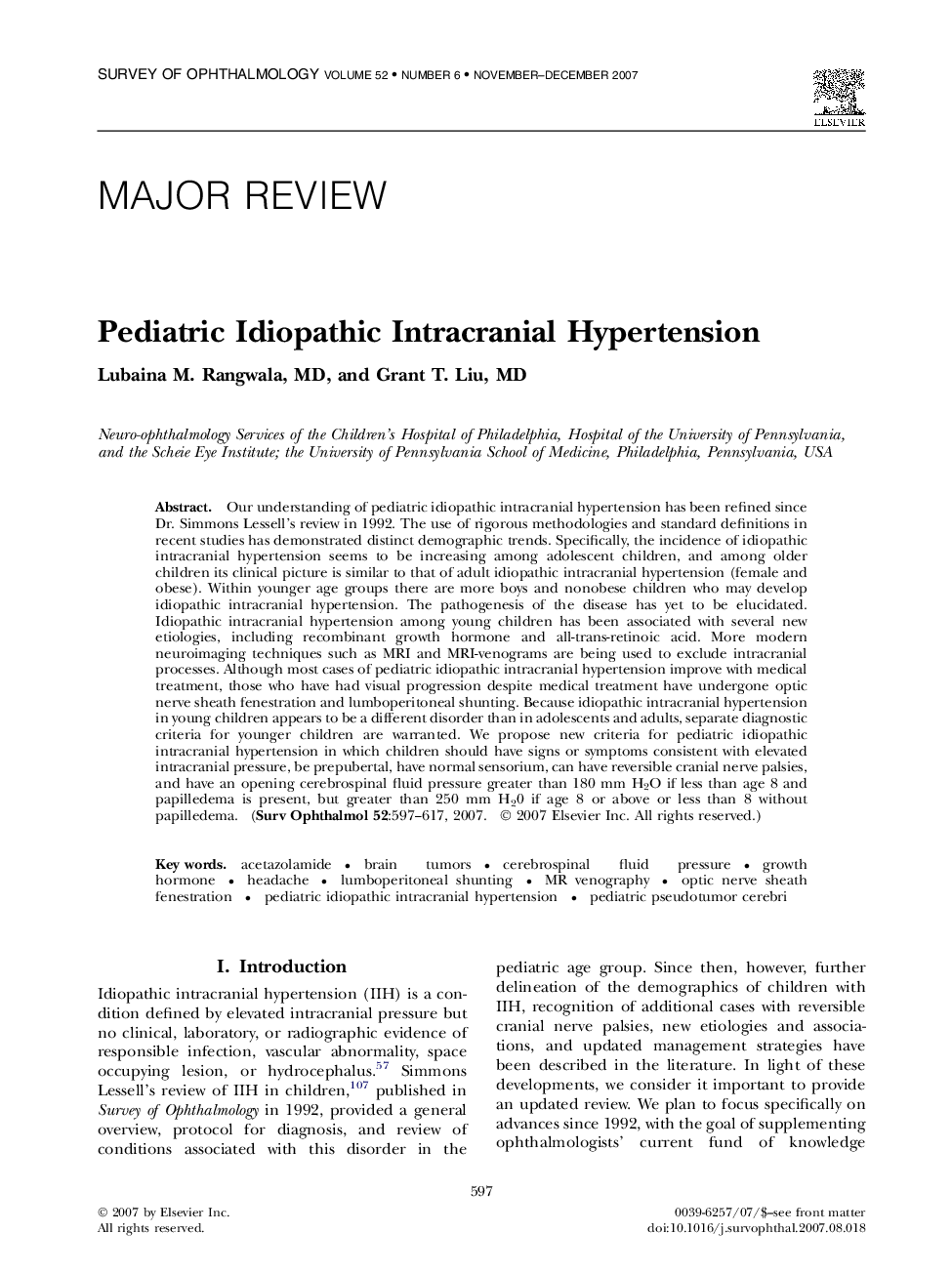| کد مقاله | کد نشریه | سال انتشار | مقاله انگلیسی | نسخه تمام متن |
|---|---|---|---|---|
| 4033002 | 1603054 | 2007 | 21 صفحه PDF | دانلود رایگان |

Our understanding of pediatric idiopathic intracranial hypertension has been refined since Dr. Simmons Lessell's review in 1992. The use of rigorous methodologies and standard definitions in recent studies has demonstrated distinct demographic trends. Specifically, the incidence of idiopathic intracranial hypertension seems to be increasing among adolescent children, and among older children its clinical picture is similar to that of adult idiopathic intracranial hypertension (female and obese). Within younger age groups there are more boys and nonobese children who may develop idiopathic intracranial hypertension. The pathogenesis of the disease has yet to be elucidated. Idiopathic intracranial hypertension among young children has been associated with several new etiologies, including recombinant growth hormone and all-trans-retinoic acid. More modern neuroimaging techniques such as MRI and MRI-venograms are being used to exclude intracranial processes. Although most cases of pediatric idiopathic intracranial hypertension improve with medical treatment, those who have had visual progression despite medical treatment have undergone optic nerve sheath fenestration and lumboperitoneal shunting. Because idiopathic intracranial hypertension in young children appears to be a different disorder than in adolescents and adults, separate diagnostic criteria for younger children are warranted. We propose new criteria for pediatric idiopathic intracranial hypertension in which children should have signs or symptoms consistent with elevated intracranial pressure, be prepubertal, have normal sensorium, can have reversible cranial nerve palsies, and have an opening cerebrospinal fluid pressure greater than 180 mm H2O if less than age 8 and papilledema is present, but greater than 250 mm H20 if age 8 or above or less than 8 without papilledema.
Journal: Survey of Ophthalmology - Volume 52, Issue 6, November–December 2007, Pages 597–617